When to Change Out Your RO/DI Filters

What to Know About RO/DI Filter Replacements
Maintaining your RO/DI system is an essential part of protecting your reef tank from contaminants that could potentially harm your aquatic life.
Your system serves as the front-line defense against impurities in your water supply, and it's essential to change the filters on time to prevent these harmful substances from sneaking through and causing issues in your aquarium.
Monitoring the performance of each stage of your RO/DI system is the best way to maximize the lifespan of your filters and ensure you’re replacing them before they can compromise your tank.
Fortunately, tracking the condition of your RO/DI filters is relatively simple with the right tools and a little bit of knowledge.
Why Choose Air, Water & Ice for Your RO/DI Needs?
At Air, Water & Ice, we are experts in RO/DI systems with extensive professional knowledge on when and how to replace your filters. Whether you're a seasoned reefkeeper or brand new to saltwater aquariums, we provide the guidance and products you need to keep your tank's water pristine.
Our selection of high-quality filters and monitoring tools, combined with our expert advice, ensures that your RO/DI system is always operating at peak efficiency.
Required Supplies
When to Change Your Sediment Filters (typically the first stage)
The sediment filter is your first line of defense, capturing large particles and debris before it clogs the carbon filters (stage 2). While some replace sediments when they first appear dirty, you will be sure it is time to replace the sediment filter when you there is a pressure drop in the system. A inline pressure gauge is easily able to identify any line pressure drops going into your RO membrane. We install the inline pressure gauge on the drain line a few inches before the fast flush flow restrictor (the only thing on all of our systems with a black handle). With a the gauge installed in this location, it will read exactly 2/3 of your incoming house pressure with a new membrane and filters installed in your system. Lets walk through the most common situation. EXAMPLE: your house pressure is 60 psi. You have a new membrane and filters installed. The inline pressure gauge placed on the drain line (before the flow restrictor) should read 40 psi. (40 psi = 2/3 of 60 psi). As the sediment filter becomes clogged, you will observe a pressure drop on this inline pressure gauge... instead of seeing 40 psi, you will see 35 psi or less. Since sediment filters are fairly inexpensive, we recommend changing ALL sediment filters when your pressure gauge drops more than 5 psi. Why? Your membrane loves pressure! Sediment filters cause line pressure drops that can significantly reduce the membranes rejection rate. This drop in rejection rate of the membrane will give you less pure RO water and exhaust your di resin quicker. Replacing sediment filters on time saves you money.
If your RO system doesn't have a inline pressure gauge, it's highly recommended to install one.
Typical Replacement Interval
While the exact timing varies based on your source water quality, a general rule of thumb is to replace sediment filters every 6-12 months. At Air, Water & Ice, we recommend our 10 micron depth sediment filter, known for their truly progressive filtration fibers that last longer and outperform most other sediment filters in their price range. Smaller micron sized sediment filters may be used (and there are several reasons why you would want a lower micron size sediment filter); however, smaller micron sized sediment filters cause a reduction in line pressure… this drop in pressure will increasingly decrease the purity of your pure RO water as your membrane (which does almost all the work) loves higher pressure. Never install less than a one micron sediment filter… it will end up suffocating your membrane if you do not have a booster pump installed on your system.
When to Change Your Carbon Block Filters
Carbon block filters are often the second and often third stage of filtration in your RO/DI system, they are crucial for removing chlorine and chloramines. Our Standard 10" carbon blocks remove up to 99% of chlorine. Over time this removal rate will reduce. Both our one micron and five micron carbon blocks are rated to treat 3,000 gallons of prefiltered water. (our inline carbon filter is 1/2 that amount, 1500 gallons). Once 3,000 gallons have passed through the filter, the removal of chlorine is less than 90%. Carbon blocks do not remove chloramines well at all. About 50% of you reading this have chloramines in your water. Your municipality adds ammonia to chlorine to help disinfect the water when the water travels longer distances. If you do have chloramines in your water, the Water Quality Association recommends catalytic carbon for POU (point of use). On most of our systems and filter packs you can select the "catalytic carbon upgrade" option or "chloramine" filter pack. Our 10" Catalytic carbon refillable cartridge is rated to treat 3,000 gallons of chloramines. Chlorine and chloramines ruins membranes fairly quickly through a process called oxidation (discussed later). We recommend changing carbon filters at least every 12 months. A rough estimate is that our carbon filters provide TWO gallons of pure RO water every day for ONE year. IF you use 4 gallons a day on average, change the carbon blocks every 6 months. A more precise way of measuring how many gallons of water has passed through a carbon block is using a flowmeter on your tap water supply line.
It is widely known in the scientific community that chlorine/chloramine tests (strips, reagents) on ultrapure water (less than 10 ppm) are extremely likely to give false positive results outside of a laboratory setting due to a wide variety of factors. Change your filters on time, get a flowmeter, get more pure RO water and extend the life of your di resin.
Typical Replacement Interval
Carbon filters generally need to be replaced at least every 12 months.
When to Change Your RO Membrane
The RO membrane is the heart of your system, responsible for removing the majority of contaminants (98-99%). To monitor its performance, use an inline or handheld TDS meter to measure the rejection rate of your membrane. As the TDS level in the product water starts to rise, it indicates that the membrane is becoming less effective and needs to be replaced.
To calculate the rejection rate, measure the TDS of your tap water and the TDS of the water coming out of your RO membrane before it passes through the DI resin. (run a gallon or so as to not accidentally test the stale water in your system or pressure tank aka "TDS creep". A well-functioning membrane typically has a rejection rate of 95%-99%. If this rate drops below 90%, it’s time to replace the membrane.
Typical Replacement Interval
RO membranes can last for 2-5 years or 15,000 gallons with proper maintenance, including regular pre-filter changes and the use of a flush valve. However, if carbon filters are not replaced on time, a process called oxidation occurs due to the thin sheets getting exposed to chlorine. At first, your RO membrane will slow down and produce less water. Next the thin film sheets will break causing the membrane to produce a significantly higher volume of poor quality water. Air, Water & Ice offers a range of high-quality membranes designed to provide industry leading 98-99% rejection rates at as low as 50 psi incoming water pressure.
When to Change Your Deionization (DI) resin
The di resin the final stage of filtration, responsible for absorbing any remaining contaminants. The best way to monitor the performance of your DI resin is to use an inline TDS meter. If the TDS reading of your DI water is anything other than 0 PPM, it's time to replace the DI resin.
Using color-changing DI resin is a practical approach to knowing when to change it out. When 50% of the resin has changed color, it's time to replace it. Do not wait until 100% of the resin is exhausted, as this can lead to contaminants slipping through. We offer NSF certified food grade DI resin from Resintech. Unlike other "color changing" resins, the color change in our resin is quite obvious going from a blue (mixed bed), purple (cation only) or dark blue (anion only) when fresh to a light brown color when getting exhausted.
Typical Replacement Interval
The replacement schedule for DI resin depends on your specific water quality and usage. A 10" DI cartridge can hold at least 3,000 ppm TDS. (inline di cartridges can hold 1/2 of this amount, 1500 ppm TDS). A quick estimate of how long a 10" refillable DI cartridge will last is as follows: We get most people under 10 ppm pure RO water quality. The pure RO water is what will go into the DI stage. IF you average 10 ppm pure RO water going into your DI stage, the DI stage will make about 300 gallons [300= 3,000ppm holding capacity/10ppm pure RO water quality) of ZERO tds water before the DI resin color changes and a TDS meter will never read ZERO TDS with that cartridge again. When performing a TDS test, always allow a gallon or so to run through the system as we do not want to test "tds creep" to draw conclusions. We only offer PREMIUM laboratory grade DI resins, including Mixed bed DI resin, Cation single bed resin and Anion single bed resin, tailored to different filtration needs, guaranteed to all be of the highest quality you can purchase.

Trust Air, Water & Ice for Expert RO/DI System Maintenance!
Invest in high quality ultrapure water with Air, Water & Ice! Founded in 1982, Air, Water & Ice is your go-to source for professional-grade RODI systems, filters, and maintenance supplies. Our extensive knowledge and quality products ensure that your system remains in top condition, providing your reef tank with the purest water possible. Whether you're replacing filters or need advice on system maintenance, our team is here to help.
At Air, Water & Ice, we are the experts when it comes to RODI systems, deionization products, RO systems, filters, membranes, water testing products, pumps, parts/fittings, and more. If you have questions, please contact us sales@airwaterice.com at or by phone at (772) 461-0256.
Read More: How to Pick the Best RODI System


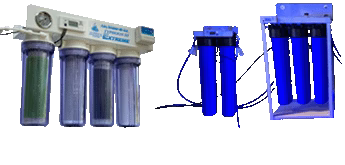 RODI SYSTEMS
RODI SYSTEMS
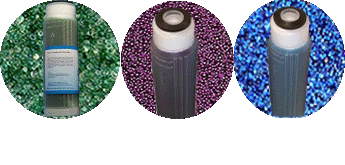 DI RESIN - DEIONIZATION
DI RESIN - DEIONIZATION
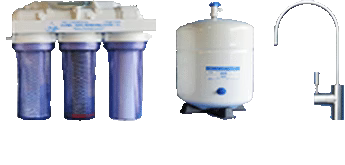 RO SYSTEMS
RO SYSTEMS
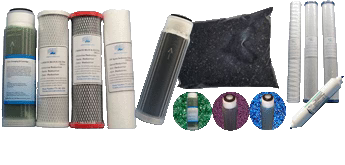 FILTERS
FILTERS
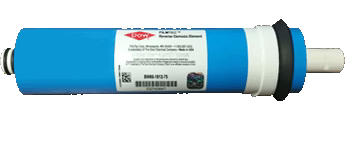 MEMBRANES
MEMBRANES
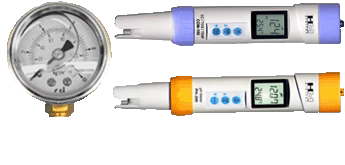 WATER TESTING
WATER TESTING
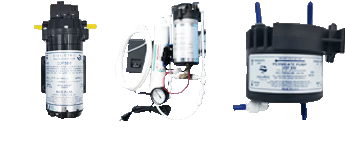 RO/RODI PUMPS
RO/RODI PUMPS
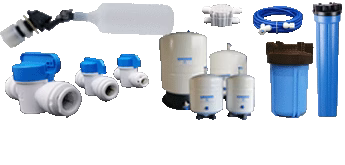 PARTS & FITTINGS
PARTS & FITTINGS
 FAQ
FAQ
Leave a comment